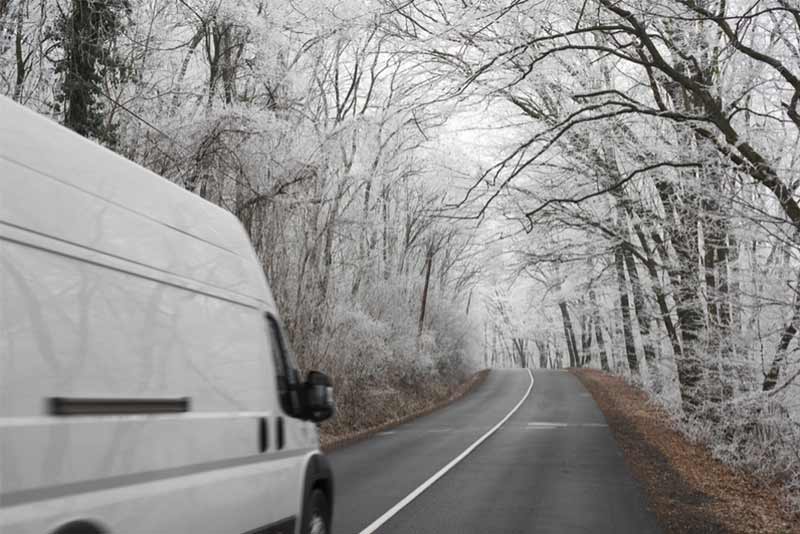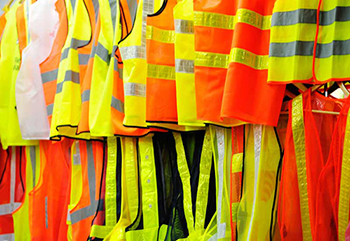Improving safety for roadside recovery workers

Roadside recovery workers undertake an essential service for breakdowns on the nation’s 262,000 miles of roads. However, their jobs can be far from safe. In August 2021, 30-year-old roadside recovery driver Tom Watson tragically died on the A303 near Andover. Tom had stopped to help a broken down car when he was killed, alongside two others, in a fatal road traffic collision. A lorry driver was subsequently arrested on suspicion of drug-driving and causing death by dangerous driving.
Unfortunately, Tom’s story is not unique. The Health and Safety Executive (HSE) reports several roadside recovery worker deaths every year with many more injured, a sad and often unknown truth of the industry. To combat this, the Slow Down Move Over campaign aims to improve safety and educate the public and industry. Their message is simple; asking road users to slow down or to move over if they see a temporary hazard on the road network including broken down cars, stranded drivers, roadside recovery vehicles or any roadside worker.
While death or injury from road traffic accidents is the most serious risk for a roadside assistance worker, there are several other health and safety hazards they may face. This includes injury from using unsuitable equipment and prolonged exposure to adverse weather conditions such as extremely high or low temperatures, rain and flooding, wind, ice and snow. This increases the risk of slips, trips and falls and puts roadside recovery and repair (RRR) technicians exposed to these conditions at risk of developing heatstroke in one extreme or cold stress in the other. Hypothermia, trench foot, chilblains and frostbite are all examples of cold stress that need to be prevented in the winter months.
As specialists in protective workwear for the RRR industry, here are phs Besafe’s top three tips to enhancing roadside safety:
Supply protective workwear which is up to the job
HSE identifies personal protective equipment (PPE) as being one of the key ways of protecting workers in roadside recovery. PPE includes protective clothing with qualities ranging from high-visibility to insulation as well as footwear, gloves and eye protection.
First and foremost, for roadside recovery workers is the need to be highly visible to passing motorists. High-visibility workwear must comply with the EN ISO 20471 Standard for High Visibility Clothing, enabling the wearer to stand out and be clearly visible from all angles. These items must be produced from fluorescent material to boost visibility during daylight and increase visibility at night. Secondly, they must feature reflective strips including around the legs and the sleeves to create retro-reflection which must be carefully maintained to ensure the garment remains fit for purpose and fully compliant. The standard includes requirements for its base fabric colour (yellow, orange and red) , minimum areas of reflectivity, placement of reflective tape, strength and thermal resistance. And you also need to make sure clothing is comfortable and lightweight so it doesn’t restrict movement. The Personal Protective Equipment at Work Act 1992 stipulates workwear must fit correctly; if it’s too big or too small, it is a breach of the regulation and could hinder the job at hand.
Throughout the year, you’ll need to consider providing additional garments. In winter conditions, such as heavy rainfall, ice and snow, they must be waterproof while reducing wind chill and insulated to maintain body temperature. Providing workers with suitable footwear will also reduce the risk of slips, trips and falls – one of the most common workplace accidents.

Maintain, inspect and repair
Once you’ve sourced the right workwear, that’s not the end of the road. As protective garments provide a purpose, you must ensure they keep doing their intended job time and time again. Dirt, mud, dust and oil can not only dim the brightness of reflective materials but can also diminish garment quality. A professional, industrial laundering service will ensure the cleaning process is rigorous while specifically designed to preserve a garment’s properties and even extend its life. At phs Besafe, inspecting garments for tears, rips, burns or damage is all part of the service, with any repairs completed before being returned so you can rest assured that every item is up to the task.
Roadside recovery vehicles and equipment must be maintained to certain standards to ensure the safety of employees. HSE requires equipment and tools, including recovery vehicles, to be subject to the Provision and Use of Work Equipment Regulations, therefore being suitable for intended use, maintained in an efficient state and regularly inspected for deterioration. Workers must be adequately trained on how to use equipment. Scheduled maintenance checks by experienced technicians will help you operate this, allowing potential issues to be identified and actioned early.
Provide first-rate training and guidance
Staff must be educated about the risks of the job and precautions to prevent them, including how to follow emergency procedures. Additionally, roadside recovery workers may need to protect the health and safety of others affected by their work, including advising occupants of casualty vehicles of any precautions they should be taking.
By explaining regulations and procedures, staff will be more likely to stick to the rules and eliminate silly mistakes. Statistics suggest employees are six times more likely to experience an accident or injury as a result of unsafe behaviours, such as taking shortcuts, than unsafe working conditions. For example, by demonstrating how effective non-slip boots are, staff will be more likely to ensure their footwear is always appropriate for the condition. And by evidencing the need for garments to have minimum hi-visibility properties, they’ll be less prone to tuck in or roll up reflective trousers or obscure jackets.
We all know suitable health and safety training is a necessity, but we shouldn’t treat it as tick-box exercise. It’s not just about ensuring staff know the rules and regulations, it’s about getting the individual on board to live and breathe health and safety in every aspect of the job. Understanding why health and safety is so important and making it personal is key to securing buy-in and, therefore, compliance.
Whether you’re an employer in the RRR industry or a worker, you need to make sure your organisation is doing its utmost when it comes to risk mitigation, meeting legal and moral obligations. In this respect, going over and above the legal minimum isn’t just about a ‘nice to do’, it’s about protecting workers while they’re doing their job and may well help save a life.
At phs Besafe, we offer high visibility workwear supply and rental options, as well as an industrial laundry service to prolong the life of these protective garments. Check out our Bright Gear range or contact us to find out more.